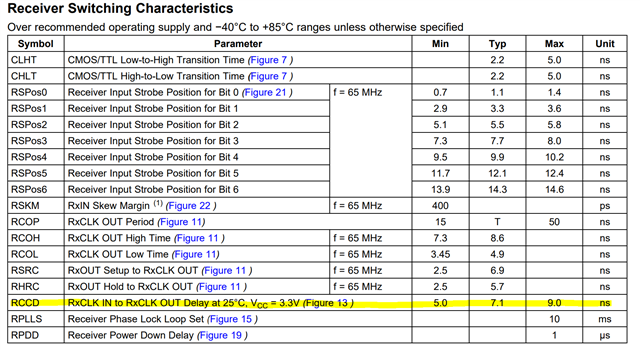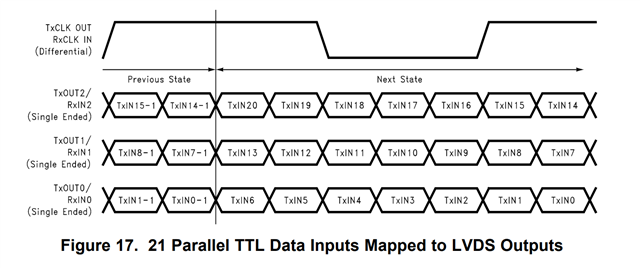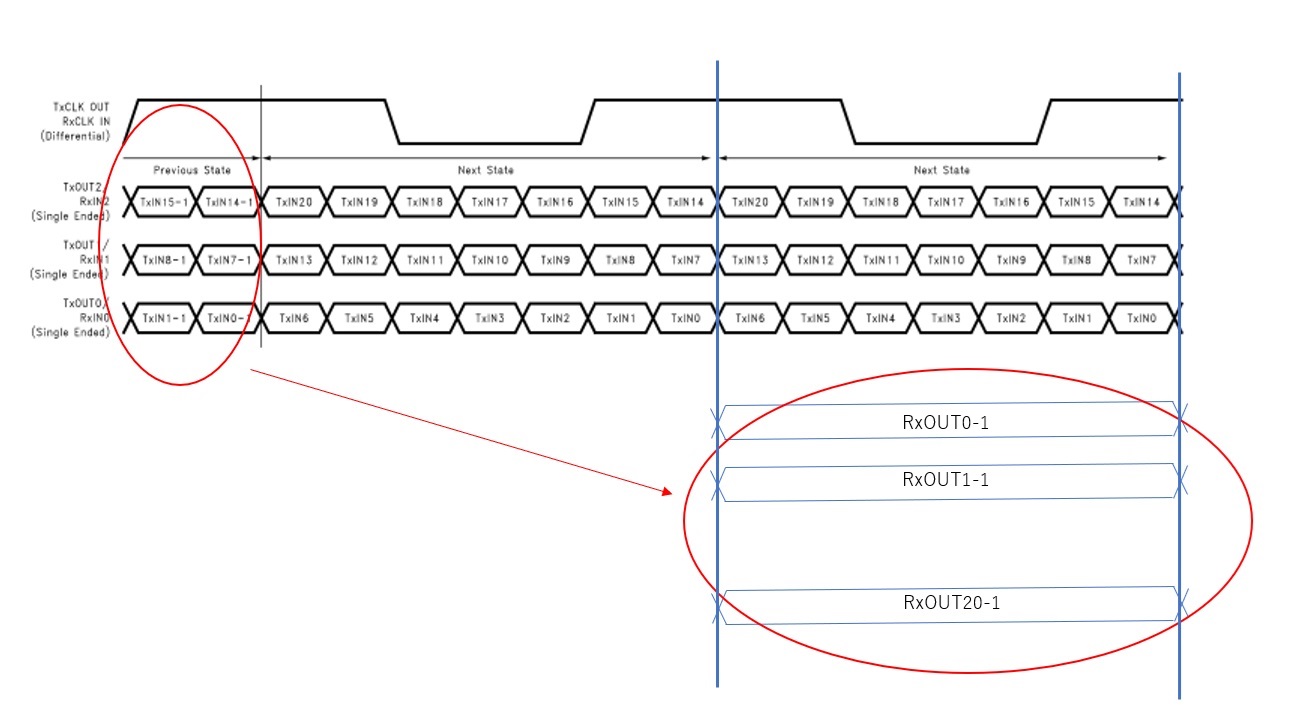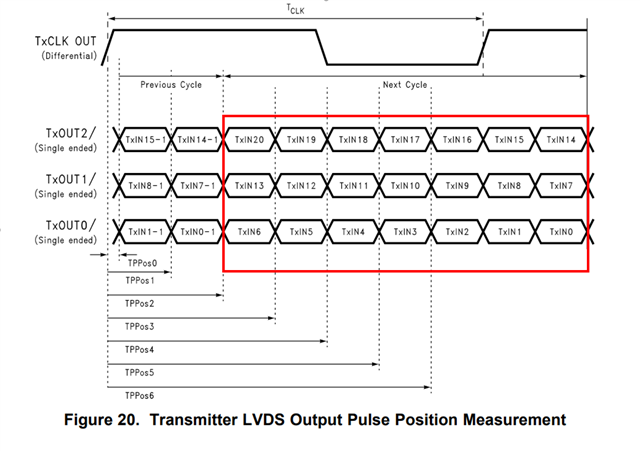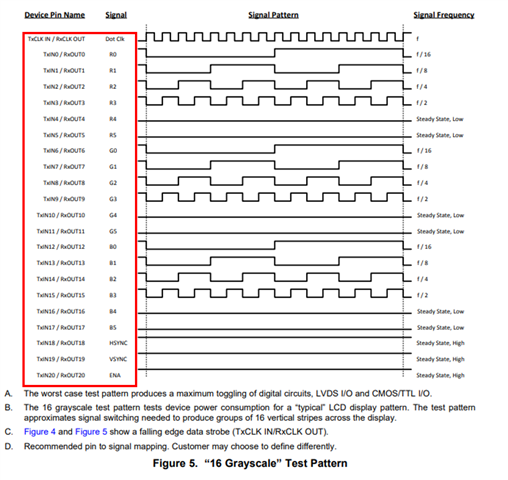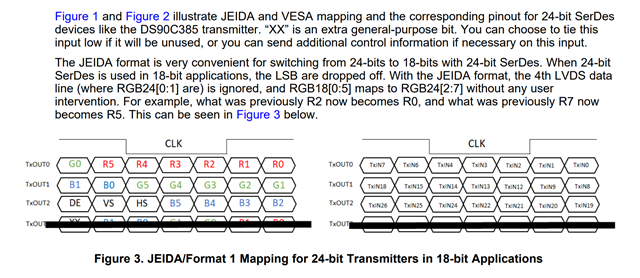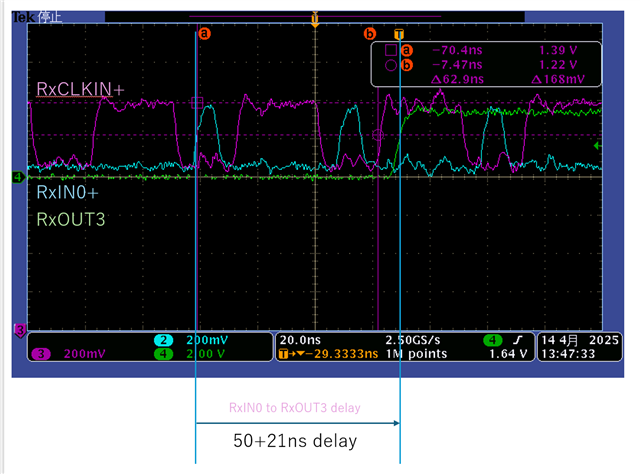Tool/software:
Hello team,
My customer would like to clarify the RxIN0 to RxOUT delay time of DS90CF364.
The customer uses 20MH clock for RxCLK. They measured the delay time is the following.
RxIN0 to RxOUT0 delay time : 50ns (1cycle)
RxIN0 to RxOUT3 delay time : 50ns+21ns
The waveform is the following.
/cfs-file/__key/communityserver-discussions-components-files/138/DS90CF364_5F00_waveform.pptx
Is This delay time appropriate? Also I and the customer do not know it from the datasheet of DS90CF364, so would you please advise where this delay is described in the datasheet?
Your advice is appreciated.
Best Regards,
Akihisa Tamazaki


